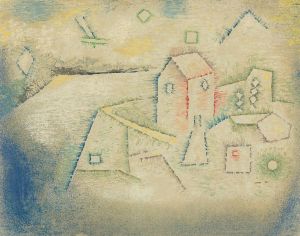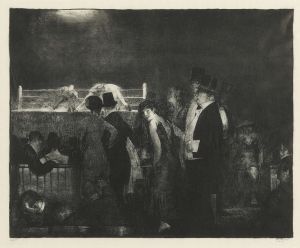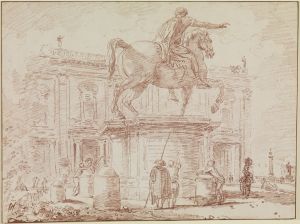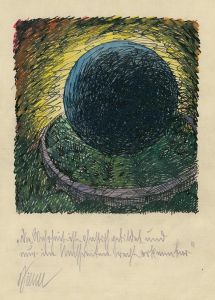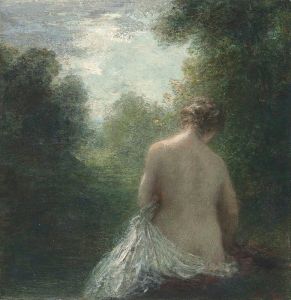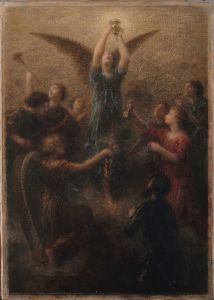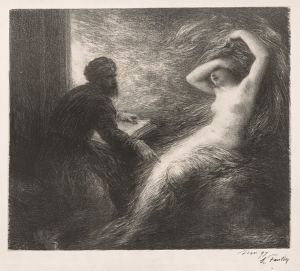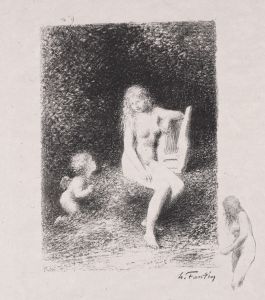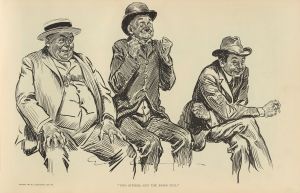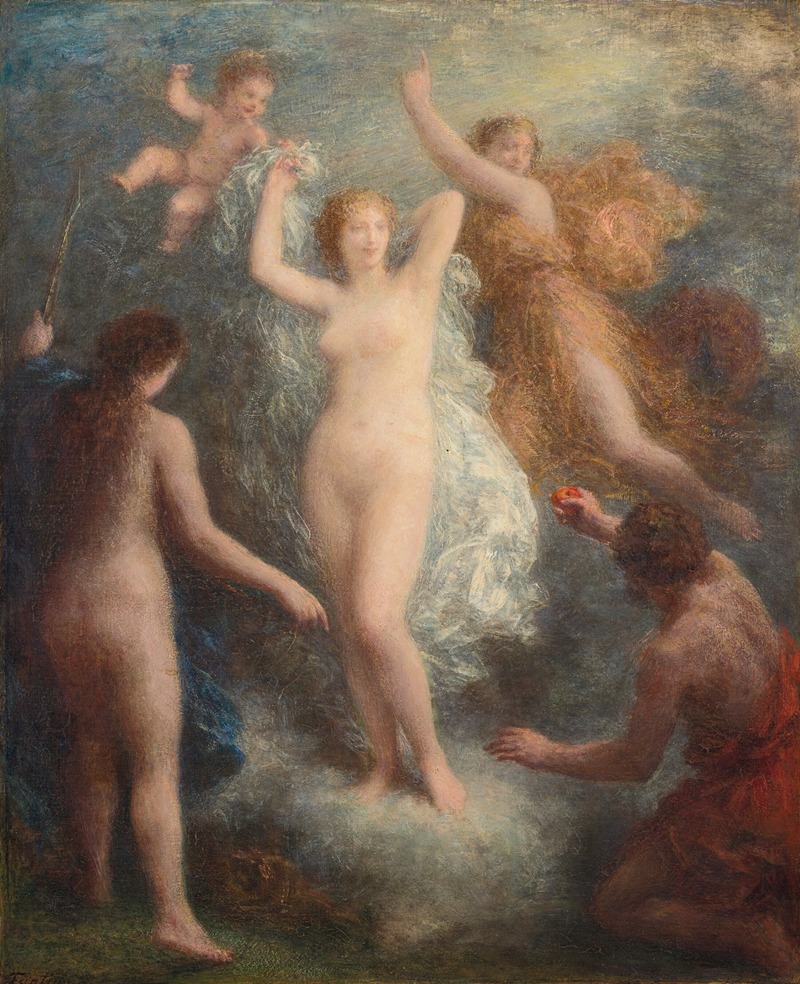
Le Jugement de Pâris
A hand-painted replica of Henri Fantin-Latour’s masterpiece Le Jugement de Pâris, meticulously crafted by professional artists to capture the true essence of the original. Each piece is created with museum-quality canvas and rare mineral pigments, carefully painted by experienced artists with delicate brushstrokes and rich, layered colors to perfectly recreate the texture of the original artwork. Unlike machine-printed reproductions, this hand-painted version brings the painting to life, infused with the artist’s emotions and skill in every stroke. Whether for personal collection or home decoration, it instantly elevates the artistic atmosphere of any space.
Henri Fantin-Latour, a French painter known for his still lifes and group portraits, created "Le Jugement de Pâris" (The Judgment of Paris) in 1902. This painting is one of his later works and reflects his interest in mythological themes, which he explored more deeply towards the end of his career.
"The Judgment of Paris" depicts the famous mythological story from Greek mythology, where Paris, a prince of Troy, is asked to judge who among the three goddesses—Hera, Athena, and Aphrodite—is the fairest. This mythological tale is a pivotal moment that eventually leads to the Trojan War. In the story, each goddess offers Paris a bribe: Hera promises power, Athena offers wisdom and skill in war, and Aphrodite tempts him with the love of the most beautiful woman in the world, Helen of Sparta. Paris ultimately awards the golden apple to Aphrodite, leading to the abduction of Helen and the subsequent Trojan War.
Fantin-Latour's interpretation of this mythological event is rendered in his characteristic style, which combines elements of realism with a dreamlike quality. The painting is notable for its soft, almost ethereal lighting and the delicate handling of the figures. The composition is carefully balanced, with Paris positioned centrally, holding the golden apple, while the three goddesses stand around him, each displaying their unique attributes.
Fantin-Latour's use of color and light in "Le Jugement de Pâris" is particularly striking. The soft, muted palette creates a harmonious and serene atmosphere, which contrasts with the underlying tension of the narrative. The figures are rendered with a high degree of detail and realism, yet there is a sense of otherworldliness to the scene, as if it exists in a timeless, mythic space.
The painting reflects Fantin-Latour's deep appreciation for classical themes and his ability to infuse them with a personal, almost introspective quality. Unlike many of his contemporaries who were moving towards Impressionism and other modernist styles, Fantin-Latour remained committed to a more traditional, representational approach. His work often bridges the gap between the Romanticism of the early 19th century and the Symbolism that would come to prominence in the late 19th and early 20th centuries.
"Le Jugement de Pâris" is housed in the Musée d'Orsay in Paris, which holds a significant collection of Fantin-Latour's works. The painting is an excellent example of his mature style and his ability to blend mythological subject matter with a deeply personal artistic vision. It stands as a testament to his skill as a painter and his unique place in the history of French art.
Fantin-Latour's legacy is often overshadowed by his more famous contemporaries, but his work continues to be appreciated for its technical mastery and emotional depth. "Le Jugement de Pâris" remains one of his most celebrated works, offering viewers a glimpse into the rich, imaginative world of one of France's most distinctive artists.





